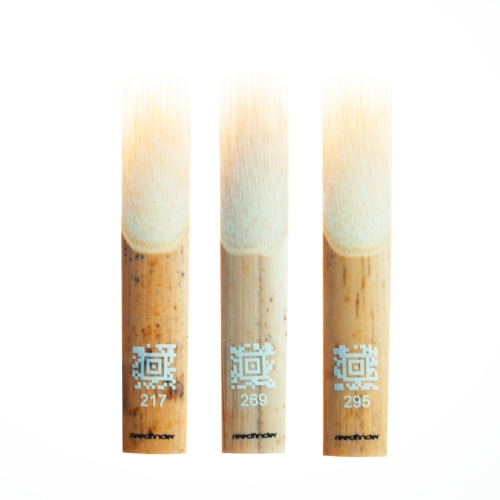Best Clarinet Mouthpieces to Buy in 2025 - A Clear Winner?
Discover the best clarinet mouthpieces! Check out our reviews and recommendations for Bb and Bass clarinet.
How Much Does a Good Mouthpiece Cost?
No!
Stay away from the no name, plastic mouthpieces which cost less than 25$. The mouthpiece heavily influences the sound and feel of your instrument. I have never tried such a cheap but „good enough“ mouthpiece.
If you know one, let me know in the comments
![]()
Standard
In this price range, you will already find mouthpieces from the biggest manufacturers like Vandoren, Yamaha, D'Addario etc. These companies produce great and stable quality products with a decent price to value ratio. Go for these more well-known manufacturers, especially if you want to order online.
Professional
These mouthpieces are being made with the highest precision and materials.
Best Mouthpieces for Bb Clarinet
| Image | Name | Product |
|---|---|---|
 | Yamaha 4C Clarinet Mouthpiece, Standard Series | Check Price |
  | Vandoren CM308 B45 Traditional Bb Clarinet Mouthpiece | Check Price |
  | Vandoren Clarinet Mouthpiece (CM1405) | Check Price |
Yamaha 4C
value option- The Yamaha Clarinet Mouthpiece 4C, part of the Standard Series, is a highly regarded accessory for both student and intermediate clarinet players.
- Material: Crafted with precision from high-quality phenol resin, it offers a well-balanced tone across all octaves.
- Specifications: With a tip opening of 1.05mm and a facing length of 19mm, it provides consistency and ease of play.
- Versatility: The 4C size is the most popular among students, emphasizing its versatility and value for players of different styles.
Vandoren B45
- The Vandoren B45 Traditional clarinet mouthpiece is a widely favored choice among clarinetists for its versatility.
- Construction: Crafted by Vandoren from durable ebonite, boasting an opening of 1.195mm.
- Design Features: Known for its medium-long facing and large chamber, producing an open, resonant sound with excellent projection.
- Enhanced Performance: Features a rounded tip and wider reed channel for fluid articulation and quick response.
- Versatility and Reliability: Stands out for its versatility and reliability, making it a top choice for clarinetists across different playing styles.
Best Bass Clarinet Mouthpieces
| Image | Name | Product |
|---|---|---|
  | Vandoren CM344 B45 Bass Clarinet Mouthpiece | Check Price |
  | Vandoren Clarinet Mouthpiece (CM145) | Check Price |
Vandoren: B45
- B45 has good response, rich sound, even tone across registers, and great articulation. If you don't want to go wrong, choose this one. B45 has been a "standard" mouthpiece for many years and for a reason.
- Same sound characteristics as B44 with a larger tip opening which makes it very responsive
- Tip Opening - 193 (1/100mm)
- Medium Long Facing
- Works best with Vandoren #2.5-#3.5 Reeds
Vandoren BD5 (CM145)
- BD5 is responsive, ideal for players seeking an effortlessly playable option with a brighter tonal palette. This mouthpiece is capable to produce a pretty large sound. BD5 requires slightly softer reeds, increased air support, and a more substantial mouthpiece placement, factors that may impact the comfort level for some musicians.
How to choose the Best Clarinet Mouthpiece
Here are some key factors to consider when making your choice:
- Playing Style
Classical clarinetists often favor mouthpieces with a darker, more mellow tone, while jazz players may look for brighter, more open-sounding mouthpieces.
A mouthpiece which has a larger tip opening will give you greater flexibility and projection but also a slightly brighter sound. They also require a slightly weaker read.
Reed Compatibility
It is possible that a new mouthpiece won’t be compatible with your existing reeds. It doesn’t mean that it won’t sound at all, but the tone or response can be different.
Check out the manufacturer information about the recommended reed type and strength, it can give you a good idea where to start.
If you test new mouthpieces, take as many reeds with you as you can. Mouthpieces with smaller tip openings will require stronger reeds.
Tuning
Clarinet mouthpieces are typically tuned to either 440Hz or 442Hz. The pitch standard of 440Hz has been widely adopted as the international standard for orchestral tuning, however in most of the countries in Europe, ensembles tune to 442Hz or even 443Hz. Make sure that your selected mouthpiece has the right pitch.
- Material matters
The material of the mouthpiece influences both tone and response. The stiffness, flexural strength, and elasticity of the material influence the resonance of the primary wave produced during reed excitation and can influence the overall tone.
Hard rubber mouthpieces are known for their warm, traditional sound, while ebonite mouthpieces offer a brighter, more responsive tone.
Despite the durability and stability of ebonite, modern alternatives like acrylic are gaining recognition for their unique tonal qualities.
Synthetic materials, such as resin, can also provide a good balance.
- Can I test before buying?
If you want to invest in a new mouthpiece, it is recommended to test more of them. If there is a local music shop in your area, they will allow you to test the mouthpieces before deciding. This trial is important not only because every mouthpiece feels and sounds different but also to be able to test the intonation of the mouthpiece and the cork size if it fits to your barrel. Also, if your ligature has the right size for the new mouthpiece, if your reeds are compatible etc.
Buying a clarinet mouthpiece online can be a good choice. But make sure that you have the right to send it back. It can be expensive if you want to order more pieces to try them out. There are however a couple services which allow you to order many mouthpieces for a small trial fee and keep only the best one (Gleichweit) for example.
Different Clarinet Mouthpiece Types
The three distinct styles of clarinet mouthpieces reflect a nuanced interplay between design, tradition, and regional preferences.
1
French Boehm
characterized by its fat, smooth-bodied structure and a tone chamber with a straight or slightly concave baffle, promotes a bright and vocal tone.
2
German
shows a slenderer body with grooves for reed binding, a tapered bore, and an A-frame tone chamber with sloping side walls, resulting in a darker tonal quality.
3
Viennese
sharing similarities with the German style, adapts to slightly wider reeds, featuring a traditionally long and close facing.
Best Clarinet Mouthpiece Brands
The clarinet mouthpiece market boasts several renowned brands, each with its unique characteristics.
Here are a few notable names I had great experience with:
Playnick
"The company PLAYNICK, founded in 2008 in Eggersdorf bei Graz (Styria), produces and designs sound systems. The focus is on clarinets and saxophones that are played by the best orchestral soloists and all those who want to become part of them. Based on digital technology and innovative forming of shape, we build a bridge between precision and emotion."Gleichweit
"Perfection in sound and playing feel can be defined in different ways for each musician, which is why I not only make my mouthpieces accessible to everyone, but can also design mouthpieces that are specifically tailored to each musician during a consultation. Whether professional, advanced, beginner or hobby clarinetist - it is my passion to help everyone enjoy playing the clarinet. This pursuit of perfection together with world-famous soloists, experienced orchestral musicians or even passionate amateurs has been very enriching for me and gives me great pleasure." - Johannes GleichweitVandoren
Vandoren is a world-renowned manufacturer of clarinet mouthpieces, known for their exceptional quality, craftsmanship, and tonal versatility.D'Addario
D'Addario has emerged as a leading innovator in clarinet mouthpiece design, offering a diverse range of options from cheap student models to handcrafted professional ones.
Mouthpiece Care
Proper care and maintenance are essential to prolong the life of your clarinet mouthpiece and ensure best performance.
Here are some key practices:
Regular Cleaning
Clean the mouthpiece inside and outside with a soft swab. Be gentle and try not to scratch the material.
Mouthpiece Cushion
It is not only important because it gives a better grip, and it allows you to hold the mouthpiece stable in the mouth – but it also protects the mouthpiece from any damage from the upper teeth. Change this as soon as your teeth get through the rubber or if you would like to clean the mouthpiece.
Vinegar
If the inside of the mouthpiece is dirty, here is a safe trick to clean it: Fill a glass with about 70% water and 30% vinegar and put the mouthpiece into this mixture. - Make sure that the cork is not in the mixture! - Make sure that the water is not hot, otherwise it can discolor your mouthpiece! - After about 20-30 minutes remove the mouthpiece and clean it with running water (again, don’t use hot water).
Be careful with ebonite mouthpieces, they can slightly discolour in the vinegar dip!

| Image | Name | Product |
|---|---|---|
  | D’Addario Woodwinds RMP01B Reserve Mouthpiece Patch - Clarinet Pads - Saxophone Accessories - Clarinet Mouthpiece Pad - Clarinet Accessories - Black, 5-Pack | Check Price |
Parts of the Mouthpiece
Clarinet mouthpieces vary in their physical characteristics, each contributing to the overall playing experience. Let's explore these key factors:
Tip Opening: The tip opening is the space between the tip and the table, affecting resistance and airflow. A larger tip opening allows for easier blowing and a brighter tone, while a smaller tip opening provides more control, resistance and generally a darker tone.
Facing Length: The facing length of a clarinet mouthpiece is the distance between the tip of the mouthpiece and the point where the reed makes contact with it. A longer facing length allows for more flexibility in the sound, while a shorter facing length provides more stability.
Chamber Size: The chamber size is the internal cavity of the mouthpiece. The shape of the chamber on a clarinet mouthpiece can affect the sound of the instrument. Rectangular chambers tend to produce a brighter sound, while trapezoidal chambers produce a darker sound. Round chambers are well-balanced and versatile, and are well-suited to klezmer and classical music. The size of the chamber also affects the sound, with smaller chambers producing a brighter sound than larger chambers.
Do you like this article?
Thanks for your feedback

World’s #1
Reed Recommendation System
We believe every musician deserves a reed that matches their unique style and sound. Each reed is selected with cutting-edge AI and machine learning based on your playing feedback.
Should You Try the Benz-Tec Digital Reed Tester? I've tested it for you!
Check out the best clarinet jokes to brighten your day!
Struggling to hit the right notes? Your instrument might be the culprit! Learn how to fix intonation problems and stay in-tune.
Unleash the full potential of your clarinet with our exclusive care guide. Elevate your playing with tips that ensure your instrument remains in perfect condition.
Here are the top 7 picks of best applications to download for classical musicians. Tuners, Metronomes and more.
Buffet Crampon's latest innovation: the Prodige Pocket Clarinet. Is it really the best instrument for young clarinetists? Check out our review!
Learn the technique of circular breathing. Expert guide with step-by-step instructions and troubleshooting tips for continous breathing.
A groundbreaking innovation of Buffet Carmpon: Clarimate. This is our honest review about its innovative features and real-world performance. Is it for you?
Discover the role of clarinet ligatures in achieving optimal sound and control. Explore various ligature types, materials, and techniques to enhance your clarinet playing experience.
Discover the Vandoren VK1 clarinet reed, a breakthrough in synthetic reed technology. Experience stability, durability, and consistent performance.


